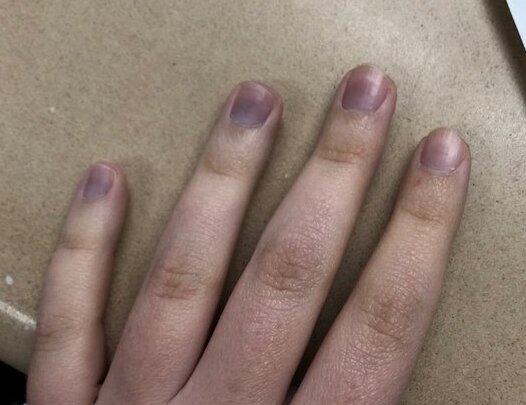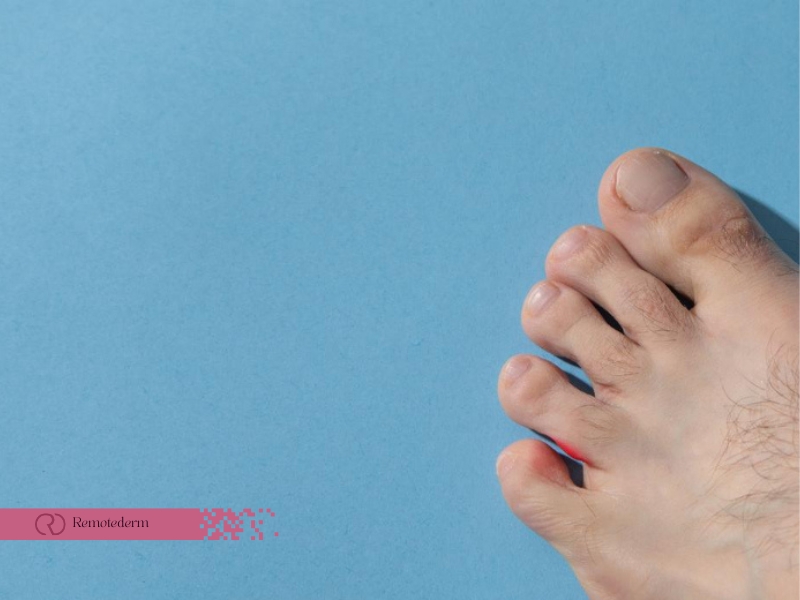Blue fingernails and toenails can be quite shocking, often indicating some health issue. In this article, we will discuss the reasons, the health implications, and the measures to deal with them, especially in Canada. Knowing the blue nails causes would be a massive step to understanding and treating this condition.
What Causes Blue Fingernails?
Blue nails can be a reason to worry and are sometimes a symptom of a disease. It is the matter that the cause is found for the appropriate treatment to be.
1. Lack of Oxygen in the Blood
The main reason for blue fingernails and toenails is a lack of oxygen in the blood, also known as cyanosis. This is due to your heart, lungs, or blood circulation not functioning correctly. Possible causes might include:
- Heart conditions: Congenital heart defects, heart failure, or other cardiovascular issues can decrease the oxygen level of your blood.
- Lung diseases: Diseases like COPD (Chronic Obstructive Pulmonary Disease), asthma or pneumonia might result in the lungs being less effective to transfer oxygen.
- Cold exposure: In colder climates like Canada, low temperatures exposure can lead to your blood vessels constricting and this can be the reason for blood and oxygen not coming to your extremities in the required amounts temporarily.
2. Raynaud’s Disease
Raynaud’s disease is another possible cause of blue fingernails and toenails. This case is identified by the narrowing of the blood vessels in the fingers and toes so consequently, there is less blood flow. This blood deficit can be the reason for the blue hue on your fingernails, particularly in cold or stressful conditions.
3. Medication Side Effects
Some medications can manifest a tint of blue in fingernails as a side effect. For instance, drugs used to treat malaria or certain psychiatric conditions can be the cause of discoloration. If you’ve just started taking a new medication and your nail color changes, you should talk to your doctor about it.
4. Heavy Metal Poisoning
Blue or bluish-gray discoloration of the fingernails occurs when certain toxic metals such as silver or copper are contributed to the body. Usually, this is the consequence of long-duration exposures in the industrial environment or via drinking contaminated water.
5. Methemoglobinemia
Methemoglobinemia, also known as “blue blood” is a very uncommon blood disorder in which the methemoglobin, the form of hemoglobin, present in the blood is produced in an abnormal amount. This can make the blood less able to deliver oxygen to the tissues, which can make the fingers and toes look blue.
Diagnosing Blue Fingernails and Toenails
When observing blue nails or toenails, it is essential to see a doctor to find out the reason. In Canada, the healthcare system offers a variety of diagnostic tools and treatments for such symptoms. The following diagnostic steps are common:
- Blood tests: These are done to check the oxygen levels and to rule out diseases like anemia or methemoglobinemia.
- Pulse oximetry: A non-invasive method that determines the oxygen saturation in your blood.
- Nail diseases chart: By using this tool, your doctor can compare your symptoms with other nail-related diseases.

Treatment Options for Blue Fingernails
Addressing the underlying reason for the blue fingernails is very important in order to effectively treat them. Whether your nails are the result of a particular health ailment or need external factors, the appropriate solution will help regain your nails to their natural color.
Treating Underlying Conditions
The most effective method of treating blue fingernails is to deal with the underlying condition. This may involve:
- Heart or lung conditions: Treatment may include medications, lifestyle changes, or in some cases, surgery.
- Raynaud’s disease: Managing this condition often involves avoiding cold temperatures, reducing stress, and taking prescribed medications to improve blood flow.
- Medication adjustments: If your blue fingernails are a side effect of a medication, your doctor may suggest an alternative treatment.
Home Care and Preventative Measures
To prevent and manage blue fingernails, particularly in cold climates like Canada, it’s important to keep warm by wearing gloves and appropriate clothing to reduce the risk of Raynaud’s episodes. Regular health monitoring, including check-ups and blood tests, can help detect underlying conditions early if you notice any changes in your nail color. Additionally, nail online dermatology services offer convenient guidance on nail conditions and can advise when to seek further medical help without needing to visit a clinic.
When to Seek Immediate Help
In the case you have blue nails along with symptoms such as irrational breathing rate, extreme pain in a chest region, or lightheadedness, go to emergency hospitals. These could be the ones that determine whether you need urgent care.
Final Thoughts
Blue nails can be indicative of a number of medical conditions, and among them are those that are time-sensitive. It’s essential to pay attention to changes in your nails and consult with a healthcare provider, especially if you live in Canada where cold weather can exacerbate certain conditions. Early detection and treatment can prevent complications and help maintain your overall health.
FAQs
Are there any home remedies for blue fingernails?
While the cause of the ailment is to be addressed primarily, a few other factors, such as warming hands, low-stress levels, and sufficient water intake may help to reduce the mildness of the symptoms.
Can blue fingernails indicate a vitamin deficiency?
Yes, in some cases, fingernails can be blue as a result of a deficiency of some vitamins, for example, vitamin B12, which is important for blood health and circulation.
Can smoking cause blue fingernails?
Certainly, smoking is the reason low oxygen levels appear in the blood and this may be thereby the reason for the development of the phenomenon singled out as cyanosis and subsequently blue nails.
How can I distinguish between nail fungus and blue fingernails caused by other conditions?
A nail fungus is usually a thickened or discolored nail that has a yellow, brown, or white color, while blue fingernails are typically associated with circulation issues or oxygen deficiency. It is recommended for you to see a dermatologist to get an exact diagnosis.
